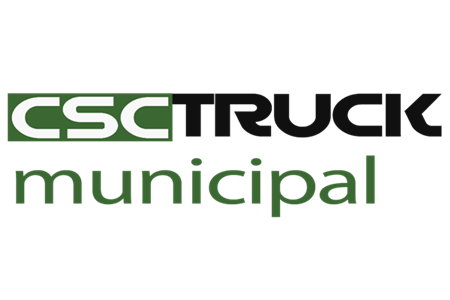Airports are bustling centers of transportation, connecting people and goods across the globe. Keeping these vast facilities clean and safe is of paramount importance. Among the many tools and equipment used to maintain airport grounds, airport sweeper trucks play a crucial role. These specialized vehicles are designed to keep runways, taxiways, and other airport surfaces free from debris, ensuring the safety of aircraft and passengers. In this article, we will explore the different types of airport sweeper trucks and their vital functions in maintaining the efficiency and safety of airports.
1. Mechanical Broom Sweepers
Mechanical broom sweepers are among the most commonly used types of airport sweeper trucks. They are designed to pick up larger debris like gravel, leaves, and litter from airport surfaces. These sweepers are equipped with a rotating broom in the front that sweeps debris into a hopper. The broom is usually made of nylon or steel bristles and can be adjusted to different angles and heights to suit various cleaning needs.
One of the advantages of mechanical broom sweepers is their ability to clear large areas quickly. They are particularly useful on runways, taxiways, and aprons, where the removal of foreign objects is essential for safe aircraft operations. Some models also have powerful air blowers to help dislodge stubborn debris, which is then collected by the broom.
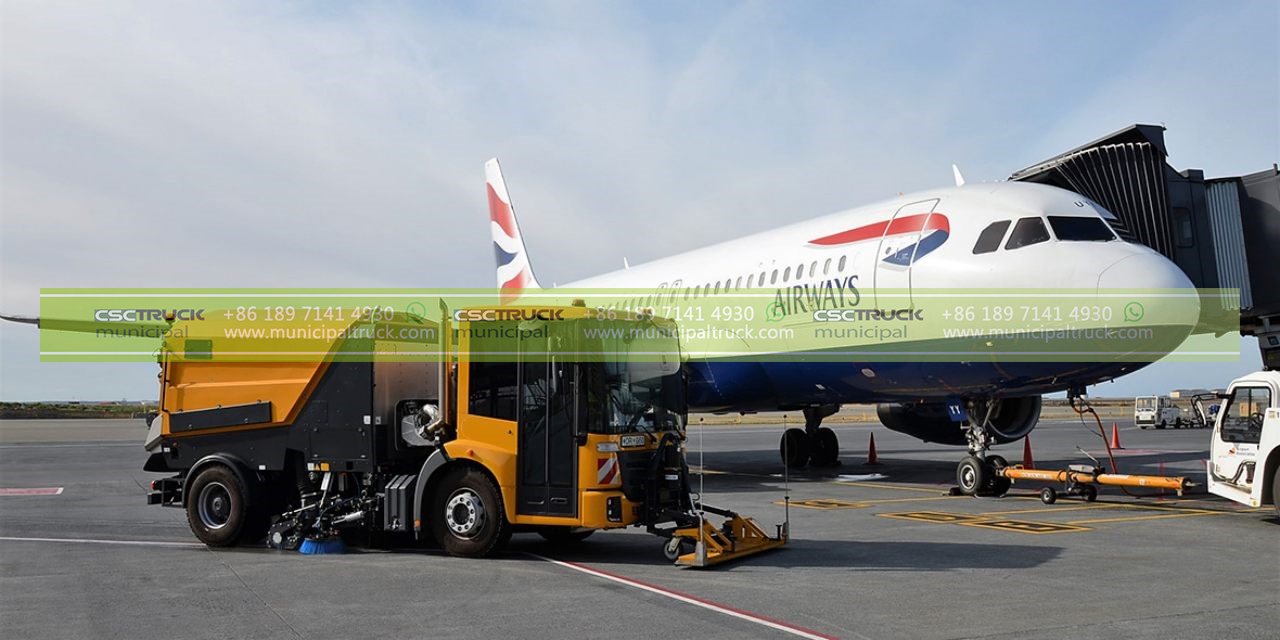
2. Regenerative Air Sweepers
Regenerative air sweepers, also known as vacuum sweepers, operate differently from mechanical broom sweepers. These airport sweeper trucks use a powerful air blower to create a high-velocity, low-pressure air stream that lifts and propels debris into a hopper. The air is then recirculated, creating a “regenerative” air system that maximizes the collection efficiency.
Regenerative air sweepers are highly effective in removing fine dust, smaller debris, and even water from airport surfaces. They are particularly valuable for maintaining clean and dust-free runways and taxiways, ensuring optimal visibility for pilots during takeoff and landing. These sweepers are also less likely to damage runway lighting and markings, making them a safer choice for such delicate areas.
3. Waterless or Dust Control Sweepers
In arid and dusty environments, waterless or dust control sweepers are a valuable addition to an airport’s fleet. These sweepers are equipped with special dust control systems that suppress airborne particles, making them an excellent choice for reducing environmental impact and maintaining air quality around the airport.
Waterless sweepers use a combination of high-powered vacuum systems and dust suppressant sprays to capture and control dust and fine debris. The captured material is then deposited into a hopper for disposal. These sweepers are particularly useful in regions with strict environmental regulations and are often used in conjunction with regenerative air sweepers to achieve comprehensive cleaning.
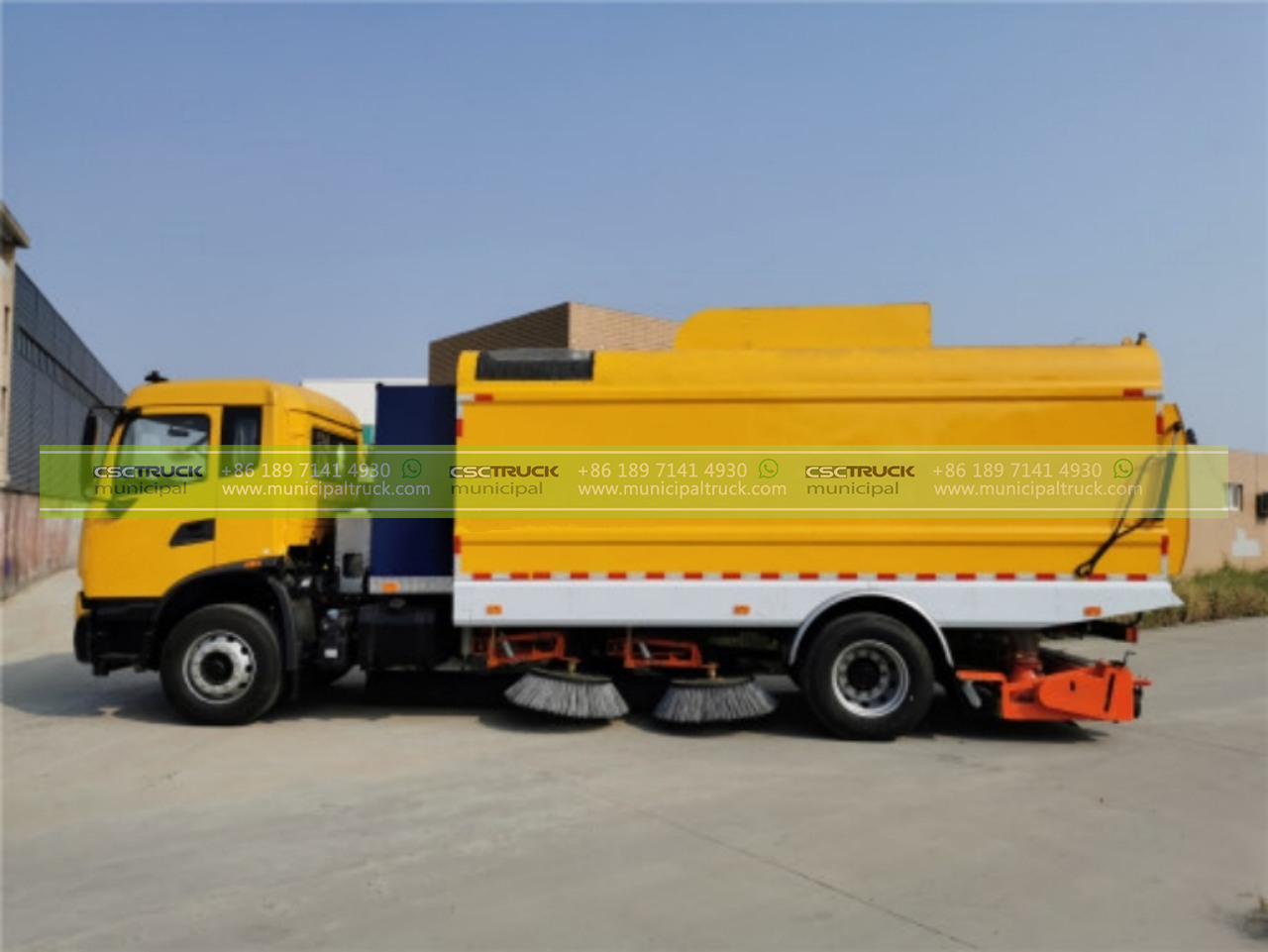
4. High-Speed Runway Sweepers
High-speed runway sweepers are a specialized type of airport sweeper truck designed for use on airport runways. These sweepers are built for speed and efficiency, allowing them to clear debris and foreign objects quickly from the runway, minimizing delays and ensuring the safety of aircraft operations.
High-speed runway sweepers often feature powerful engines and heavy-duty components to withstand the rigors of constant use on runways. They are capable of cleaning at speeds that can match or even exceed the takeoff and landing speeds of the largest commercial aircraft. These sweepers are equipped with multiple brushes and air blowers to ensure a thorough cleaning process.
5. Compact and Tow-Behind Sweepers
While larger airport sweeper trucks are essential for clearing runways and taxiways, compact and tow-behind sweepers are versatile options for cleaning smaller areas around terminals, parking lots, and cargo facilities. These smaller sweepers can be attached to smaller utility vehicles or towed behind tractors, making them easy to maneuver in tight spaces.
Compact and tow-behind sweepers are designed to collect debris efficiently and are ideal for maintaining the appearance and safety of passenger and employee areas within the airport. They are also useful for sweeping sidewalks, access roads, and parking garages, ensuring that these areas remain clean and free from potential hazards.
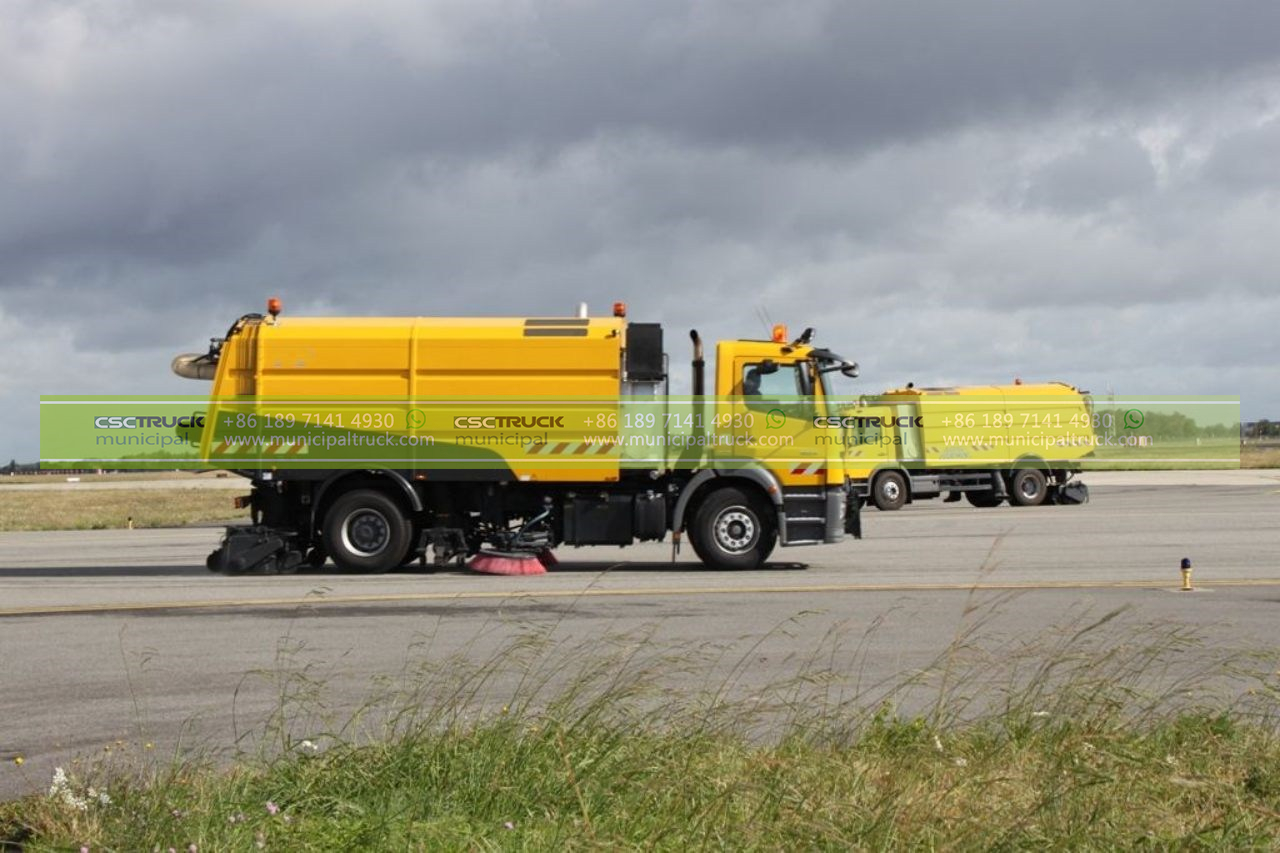
6. Airside and Landside Sweepers
Airport operations can be divided into 2 main areas: airside and landside. Airside operations encompass all areas where aircraft operate, such as runways, taxiways, and aprons. Landside operations cover areas accessible to passengers, employees, and vehicles, such as terminals, parking lots, and access roads. Airport sweeper trucks are typically categorized as airside or landside sweepers based on their primary usage.
Airside sweepers are specially designed to withstand the demands of runway and taxiway cleaning, where they must handle larger debris and potentially hazardous materials. Landside sweepers, on the other hand, are typically smaller and more maneuverable, making them well-suited for cleaning passenger areas and maintaining the overall aesthetics of the airport.
Conclusion
Airport sweeper trucks are indispensable tools in the day-to-day operations of airports worldwide. They ensure that runways, taxiways, and other critical areas remain free from debris and foreign objects, contributing to the safety of aircraft operations and passenger well-being. The different types of airport sweeper trucks, including mechanical broom sweepers, regenerative air sweepers, waterless or dust control sweepers, high-speed runway sweepers, compact and tow-behind sweepers, and airside and landside sweepers, offer a comprehensive range of cleaning solutions tailored to the unique needs of various airport environments.
The choice of sweeper type depends on factors like the airport’s size, location, environmental regulations, and specific cleaning requirements. Regardless of the type used, airport sweeper trucks play a vital role in maintaining the cleanliness, safety, and efficiency of airports, ensuring that travelers can continue to experience smooth and secure journeys around the world.
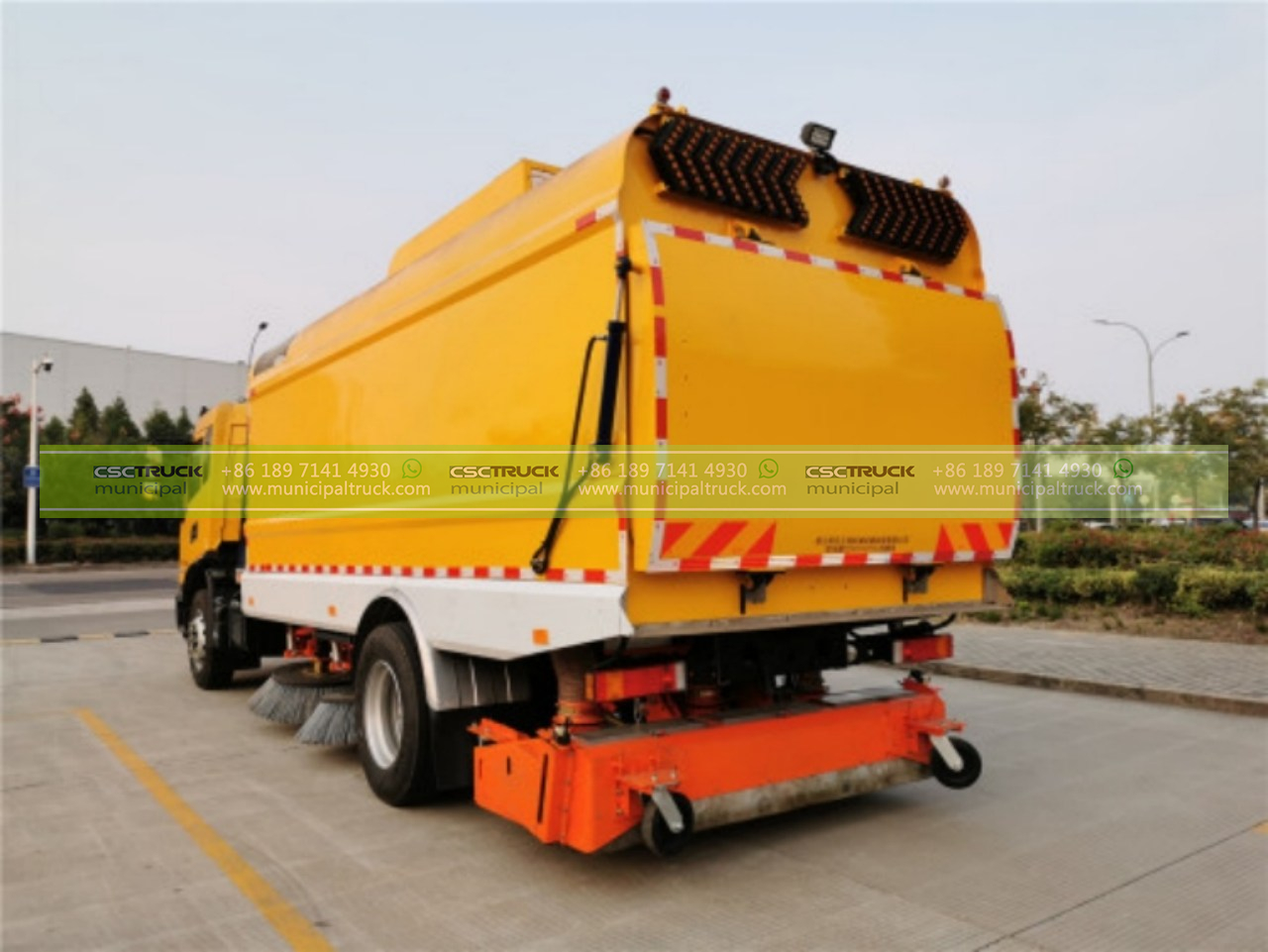
Contact us for this municipal truck or similar trucks: [email protected] Call us or What's APP us: +86 189 4292 3930
